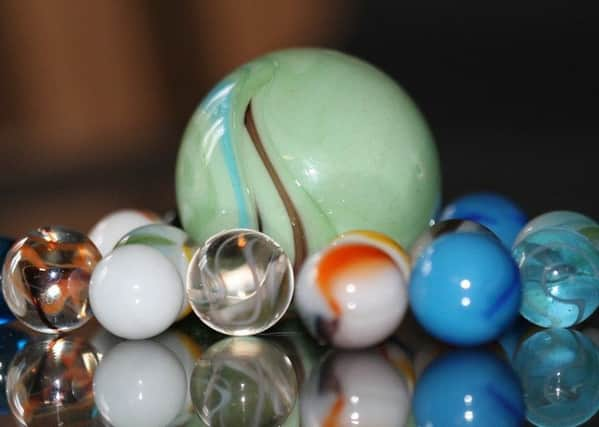Antiques Column: Marbles '“ colourful collectors' items


Collectors look for marbles displaying complex patterns... the more complex and colourful, the more valuable they are.
Symmetrical patterns and size also add a premium to the price.
Advertisement
Hide AdAdvertisement
Hide AdSulphides, which are clear marbles with a figural insert, are among the most popular.
Probably the most desirable marbles are handmade, mostly German, from circa 1850 until the days of World War One.
They were made from brightly coloured glass rods that created swirling patterns of colour.
The different patterned marbles created are known by different names including swirls, onoinskins and corkscrews.
Advertisement
Hide AdAdvertisement
Hide AdThe tell tale sign of a handmade marble is the slightly rough area that is called a pontil mark.
This is the mark that is left behind when the marble is removed from the glass rod in which it is made.
It is important to distinguish these from the machine made examples that came from America after World War Two.
Machine made marbles are still very popular today, partly due to the scarcity and expense of handmade examples but also because of childhood nostalgia; many of today’s collectors played with these American marbles when they were young and look back fondly on those memories even now.
Advertisement
Hide AdAdvertisement
Hide AdManufacturers to look out for include the Akro Agate Company, M. F. Christensen & Son and the Peltier Glass Company, but the exact value of individual marbles can vary enormously.
Collectors are also beginning to take an interest in the innovative marble makers of today, especially as the Internet auction market continues to boom.